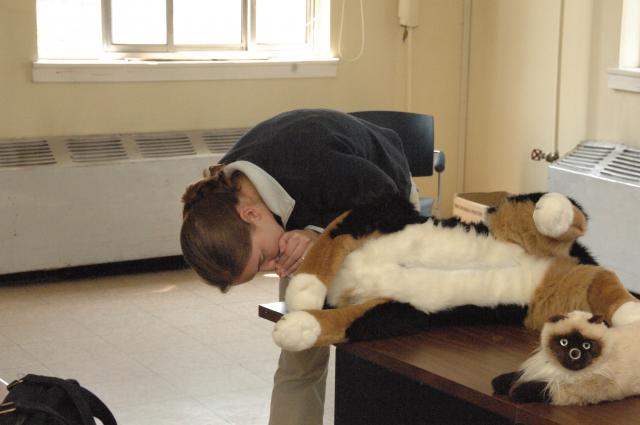Pet First Aid Training

First aid treatment should never be used as a substitute to veterinary care. However, pet owners with good first aid training can definitely save pet’s life while waiting for professional help. Here are some of the usual pet emergencies with their first aid procedures:
Cuts
Small cuts can heal completely in a few days with simple rinsing of water are regular application of antibiotic ointment. More severe and deeper cuts may require stitching – his should be done by a veterinarian. When applying first aid to any cuts, make sure that the animal is muzzled. Flush the affected area with enough water to remove any dirt and debris. If the cut is draining, moist and has inflammation around the edges after 3 days, call for veterinary help.
External Bleeding
The aim is to stop the bleeding. Use thick gauze pad or clean clothes and press it gently against the wound. Keep the pressure on for a couple of minutes until the blood starts clotting. Severe bleeding on the limp requires the use of gauze or an elastic band – use it as a tourniquet between the wound and the body while keeping pressure over the wound. Release the tourniquet every 15 to 20 minutes for 20 seconds.
Internal Bleeding
Internal bleeding has several symptoms such as blood in urine, coughing up blood, bleeding from mouth, nose, rectum, collapse, pale gums and quick and rapid pulse. Call for veterinary help immediately while keeping the animal calm and quiet.
Choking
Too much pawing of the mouth, difficulty breathing, blue-tinged tongue or lips, and choking sound when coughing and breathing are the things you should look for if you suspect that your pet is choking. When approaching the animal, use extreme caution as it will likely bite out of panic. Open the mouth and look for the any foreign object. Using pliers or tweezers, remove the object without trying to push it down to the throat. If the object is too deep, seek for a veterinary help. If the animal is not responding, place your both hands to each side of the rib cage and apply quick and firm pressure three to four times. You do this to force the air out of the chest and push the object from behind. Repeat this procedure until the object is removed or until you reach the veterinary clinic.
Fracture
Utmost care is important when attending to animals with a fracture or a broken bone. Animals tend to be more aggressive and bite as a self-defense. If safe and not stressful to animal, try to assess the traumatized area and look for any irregularity on the limb that is not present on the other side. Immobilize the fractured area as soon a possible. If necessary, use a muzzle. If there is bleeding, apply mild pressure on the area to stop blood flow. Transport the dog to the nearest veterinary clinic. During transport, keep the fractured area immobilized.
Burns
Flush the affected area with cool running water. Get a mixture of ice and water held within a soft towel and apply it to the burnt area. Call for help.
Simple pet first aid kit includes:
- Adhesive tape
- Wrapping and bandage materials for wrapping wounds
- Antibiotic ointment and antiseptic wipes
- Towels or cloth
- Blanket or board to act as a stretcher
- Saline eye flush
- Latex gloves
- Emergency numbers written on a piece of paper



